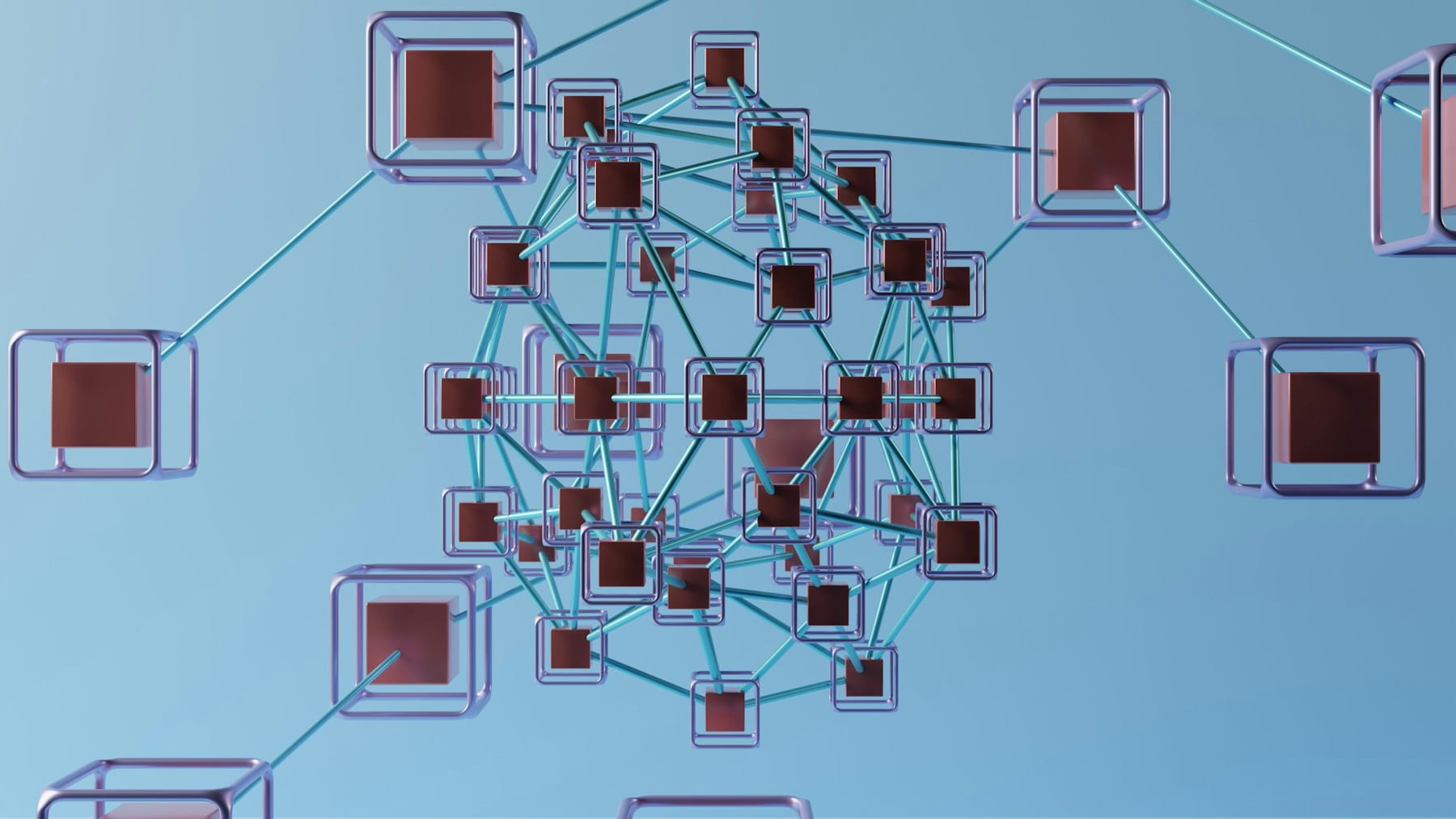Email security systems operate like digital bouncers at the club entrance of your inbox. They examine every message, deciding which ones deserve entry and which should be sent packing to the spam folder. But the mechanics behind these filters are far more sophisticated than most people realize.
Modern email systems process billions of messages daily, and spam makes up roughly 45% of all email traffic worldwide. That's a staggering volume of unwanted content that needs filtering before it reaches end users. The technology that makes this possible combines multiple detection methods, machine learning algorithms, and real-time threat intelligence to create robust defense systems.
Understanding how spam filters work is crucial for anyone sending email marketing campaigns or transactional emails. Whether you're a developer building email infrastructure or a marketer trying to ensure your messages reach the inbox, these filtering mechanisms directly impact your email deliverability.
Table of contents
- Basic spam filter architecture
- Content analysis techniques
- Reputation-based filtering
- Bayesian filtering algorithms
- Machine learning approaches
- Header analysis and authentication
- Real-time blacklists and whitelists
- Heuristic scoring systems
- Advanced detection methods
- Performance optimization
Basic spam filter architecture
Email filters operate at multiple layers within the email delivery infrastructure. The filtering process begins when an email server receives an incoming message. Most modern email systems implement a multi-stage filtering pipeline that examines different aspects of each message.
The first stage typically occurs at the connection level. When an external server attempts to deliver email, the receiving mail server checks the sender's IP address against various reputation databases. This happens before the email content is even transmitted, making it one of the most efficient filtering methods.
Next comes the envelope and header analysis phase. The system examines metadata about the message, including routing information, timestamps, and authentication records. This data reveals important details about the message's origin and path through the internet.
Content filtering represents the final major stage. Here, the system analyzes the actual message body, attachments, and embedded elements. This process is computationally intensive but catches many threats that pass through earlier stages.
Each filtering stage assigns scores or flags to incoming messages. The cumulative result determines whether a message gets delivered to the inbox, marked as spam, or rejected entirely. Different email providers use varying thresholds and scoring mechanisms, which explains why the same message might be filtered differently across different email services.
This multi-stage approach is why proper DNS email record configuration is so critical - authentication records like SPF, DKIM, and DMARC are evaluated during the header analysis phase and can significantly impact whether your messages pass through these filters successfully.
Content analysis techniques
Content filtering algorithms scan email text for patterns commonly associated with spam messages. These systems look beyond simple keyword matching, examining linguistic patterns, formatting anomalies, and structural characteristics that distinguish legitimate communications from bulk promotional content.
Modern content filters use sophisticated text analysis methods. They examine word frequency distributions, sentence structure complexity, and vocabulary diversity. Spam messages often exhibit telltale signs like excessive capitalization, unusual punctuation patterns, or deliberate misspellings designed to evade detection.
The filters also analyze HTML structure in email messages. Legitimate marketing emails typically follow standard HTML practices, while spam messages often contain malformed code, invisible text, or suspicious embedded elements. Image-to-text ratios provide another signal - messages with large images but minimal text often indicate promotional content designed to bypass text-based filters.
This is why following email delivery best practices is essential - proper HTML structure, balanced text-to-image ratios, and clean formatting can help your broadcast emails pass through content filters successfully.
URL analysis forms another critical component. The system examines embedded links, checking their destinations against known malicious sites and analyzing URL structures for suspicious patterns. Shortened URLs or links with unusual domain names trigger additional scrutiny.
Attachment scanning adds another layer of protection. The system checks file types, examines embedded executables, and scans for malicious code signatures. Even seemingly innocent attachments can contain hidden threats or be used to establish trust before delivering malicious content in subsequent messages.
Reputation-based filtering
Sender reputation systems track the historical behavior of email sources to predict the likelihood that future messages from those sources will be spam. These systems maintain vast databases of sending patterns, user feedback, and delivery statistics for millions of email addresses and domains.
IP address reputation forms the foundation of many filtering systems. Email servers that consistently send high-quality, legitimate email build positive reputations over time. Conversely, servers associated with spam campaigns or malicious activity accumulate negative scores that impact future delivery success.
Domain reputation operates at a higher level, tracking the behavior of entire organizations or email service providers. Established domains with consistent sending practices typically enjoy better reputations than newly registered domains or those with erratic sending patterns.
The reputation calculation process considers multiple factors. Volume patterns matter - sudden spikes in email volume from previously low-volume senders often indicate compromised accounts or spam campaigns. User engagement metrics like open rates, click-through rates, and complaint rates also influence reputation scores.
Feedback loops from major email providers contribute valuable data to reputation systems. When users mark messages as spam or move them to spam folders, this information feeds back into reputation databases, affecting future delivery decisions for similar messages or senders.
This reputation system is why maintaining good sender practices is crucial for email marketing success. Understanding how to prevent your emails from going to junk involves building and maintaining positive sender reputation through consistent, legitimate sending practices.
Geographic sending patterns also factor into reputation calculations. Messages originating from regions known for high spam activity may face additional scrutiny, while senders from established business locations with consistent patterns often receive preferential treatment.
Bayesian filtering algorithms
Bayesian spam filters represent one of the most mathematically elegant approaches to email classification. These systems learn from examples of both spam and legitimate email, building statistical models that can classify new messages based on probability calculations.
The Bayesian approach treats email classification as a statistical inference problem. The filter maintains databases of word frequencies found in spam versus legitimate messages. When a new message arrives, the system calculates the probability that the message is spam based on the words it contains.
Token extraction forms the first step in Bayesian filtering. The system breaks the email into individual words or phrases (tokens), then looks up the spam probability for each token based on historical data. Common spam words like "free," "guarantee," or "limited time" typically have high spam probabilities, while business terms or personal communication phrases have lower probabilities.
The mathematical beauty of Bayesian filtering lies in its ability to combine individual token probabilities into an overall message score. The system uses Bayes' theorem to calculate the likelihood that a message containing a specific combination of tokens is spam.
Training data quality significantly impacts Bayesian filter effectiveness. These systems require substantial amounts of both spam and legitimate email examples to build accurate statistical models. The training process is ongoing - filters continuously update their models as new examples become available.
One interesting characteristic of Bayesian filters is their adaptability to different email environments. A filter trained on corporate email will develop different statistical models than one trained on consumer email, reflecting the different communication patterns and vocabulary used in each context.
This adaptability means that businesses engaged in email marketing need to understand their specific audience's communication patterns to avoid triggering these sophisticated filters.
Machine learning approaches
Modern spam filtering increasingly relies on machine learning algorithms that can identify complex patterns human programmers might miss. These systems analyze vast amounts of email data to discover subtle relationships between message characteristics and spam classification.
Neural networks excel at processing the unstructured data found in email messages. Deep learning models can analyze text content, formatting patterns, and metadata simultaneously, identifying subtle combinations of features that indicate spam. These models often outperform traditional rule-based systems because they can adapt to new spam techniques automatically.
Feature engineering plays a critical role in machine learning-based filters. Engineers must decide which message characteristics to feed into the algorithms. Common features include word frequencies, character distributions, HTML structure analysis, attachment properties, and sender metadata.
Training machine learning models requires careful attention to data quality and balance. The training dataset must include representative examples of both spam and legitimate email from the target environment. Imbalanced datasets - where spam vastly outnumbers legitimate email or vice versa - can lead to biased models that perform poorly in production.
Ensemble methods combine multiple machine learning algorithms to improve overall accuracy. A typical ensemble might include a neural network for content analysis, a decision tree for metadata evaluation, and a support vector machine for sender reputation assessment. The final classification combines predictions from all models.
The challenge with machine learning filters lies in their "black box" nature. Unlike rule-based systems where administrators can understand why a message was classified as spam, machine learning models often make decisions based on complex feature interactions that are difficult to interpret or explain.
This complexity makes it even more important to follow email delivery best practices and maintain proper DNS email record configuration since these are factors that machine learning models consistently evaluate.
Header analysis and authentication
Email headers contain extensive metadata about message routing, authentication, and delivery. Sophisticated filters analyze this information to identify forged messages, compromised accounts, and suspicious routing patterns.
SPF (Sender Policy Framework) records help verify that messages originate from authorized mail servers. When a domain publishes SPF records, receiving servers can check whether incoming messages actually come from approved sources. Failures in SPF verification often indicate spoofed or forged messages.
DKIM (DomainKeys Identified Mail) provides cryptographic verification of message integrity. Sending servers sign outgoing messages with private keys, and receiving servers verify these signatures using public keys published in DNS records. DKIM verification failures suggest message tampering or forgery.
DMARC (Domain-based Message Authentication, Reporting, and Conformance) policies specify how receiving servers should handle messages that fail SPF or DKIM checks. DMARC enables domain owners to protect against email spoofing by instructing receivers to quarantine or reject unauthorized messages.
These authentication protocols are fundamental to modern email security and require proper DNS email record configuration. Setting up SPF, DKIM, and DMARC records correctly is essential for any business serious about email deliverability and avoiding spam filters.
Routing analysis examines the path messages take through the internet. Legitimate messages typically follow predictable routing patterns, while spam often exhibits unusual routing characteristics like unnecessary relay hops or routing through suspicious networks.
Timestamp analysis can reveal messages that were backdated or show other temporal anomalies. Messages with timestamps that don't align with routing information may indicate manipulation attempts.
Real-time blacklists and whitelists
Real-time blackhole lists (RBLs) provide dynamic databases of IP addresses, domains, and email addresses associated with spam activity. These lists are updated continuously as new threats are identified and existing threats are resolved.
DNS-based blacklists offer efficient lookup mechanisms for mail servers. When processing incoming mail, servers can quickly query multiple blacklists to check sender reputation. The DNS infrastructure makes these lookups fast and scalable.
Different blacklists focus on various threat categories. Some track known spam sources, others monitor compromised computers, and specialized lists identify phishing sites or malware distribution points. Mail administrators typically configure their systems to check multiple blacklists for comprehensive protection.
Whitelist systems take the opposite approach, maintaining lists of trusted senders whose messages should bypass normal filtering. These lists are particularly useful for business communications where false positives can have serious consequences.
Dynamic reputation systems combine blacklist and whitelist concepts, assigning numerical scores to senders based on recent activity. These scores can change rapidly as sender behavior evolves, providing more nuanced filtering decisions than simple binary blacklist entries.
The challenge with blacklist systems is maintaining accuracy while minimizing false positives. Overly aggressive blacklisting can block legitimate email, while conservative approaches may allow spam to pass through.
This balancing act is why choosing the right email hosting solution matters - providers with good infrastructure and reputation management can help you avoid blacklists while maintaining high deliverability rates for your email marketing campaigns.
Heuristic scoring systems
Heuristic filters apply rule-based logic to evaluate multiple message characteristics simultaneously. These systems assign numerical scores to various message attributes, then sum the scores to determine overall spam likelihood.
Content analysis rules examine message text for suspicious patterns. High scores might be assigned to messages containing excessive capitalization, multiple exclamation points, or common spam phrases. The scoring approach allows administrators to fine-tune sensitivity by adjusting individual rule weights.
Formatting analysis evaluates HTML structure, color schemes, and layout characteristics. Messages with hidden text, unusual font choices, or excessive formatting complexity often receive elevated scores.
Sender analysis examines the From address, Reply-To fields, and routing information for inconsistencies or suspicious patterns. Messages from newly registered domains or those with mismatched sender information typically receive higher scores.
The flexibility of heuristic systems allows administrators to create custom rules for specific environments. Corporate networks might implement rules that flag external messages claiming to be from internal users, while consumer email services might focus on promotional content detection.
Score thresholds determine final message disposition. Messages below certain scores are delivered normally, those in middle ranges might be marked as suspicious, and high-scoring messages are rejected or quarantined.
Advanced detection methods
Sophisticated spam operations increasingly use techniques designed to evade traditional filtering methods. Advanced detection systems counter these efforts with innovative analysis approaches.
Image spam detection analyzes embedded graphics for text content and suspicious characteristics. Spammers often embed promotional text in images to bypass text-based filters. Modern systems use optical character recognition (OCR) to extract text from images, then apply normal content filtering to the extracted text.
Behavioral analysis examines sending patterns over time to identify suspicious activity. Legitimate senders typically exhibit consistent sending volumes and timing patterns, while spam campaigns often show sudden volume spikes or unusual timing characteristics.
Social network analysis maps relationships between email accounts, domains, and infrastructure elements to identify coordinated spam campaigns. Multiple accounts sending similar messages or sharing infrastructure resources often indicate organized spam operations.
Language detection algorithms analyze writing patterns to identify messages that don't match the claimed sender's typical communication style. Compromised accounts often exhibit sudden changes in writing style, vocabulary, or language usage.
Honeypot systems deploy email addresses specifically designed to attract spam. Since these addresses never engage in legitimate communication, any messages they receive are automatically classified as spam and used to update filtering systems.
Machine learning models trained on adversarial examples can better resist evasion attempts. These models learn to recognize spam even when spammers deliberately modify messages to avoid detection.
Performance optimization
Email filtering systems must process enormous message volumes while maintaining low latency and high accuracy. Performance optimization techniques ensure these systems can operate effectively at scale.
Caching mechanisms store frequently accessed data like reputation scores, blacklist entries, and authentication records. Effective caching reduces database queries and network requests, significantly improving processing speed.
Parallel processing architectures allow multiple messages to be analyzed simultaneously. Modern filtering systems distribute workload across multiple servers or processor cores to handle peak traffic volumes.
Early rejection strategies terminate processing for obviously spam messages as quickly as possible. By checking the most reliable indicators first, systems can reject clear spam without performing expensive content analysis.
Preprocessing optimization includes techniques like message deduplication and bulk processing. Systems can identify and process multiple copies of the same message more efficiently than analyzing each copy independently.
Statistical sampling allows systems to apply expensive analysis techniques to representative message subsets rather than every single message. This approach maintains detection accuracy while reducing computational requirements.
Resource scheduling ensures that filtering resources are allocated effectively during peak traffic periods. Systems can prioritize processing for high-value users or time-sensitive messages while applying more thorough analysis during low-traffic periods.
The future of email filtering
Spam filtering technology continues to evolve as both legitimate users and malicious actors adapt their behaviors. Email infrastructure providers must stay ahead of emerging threats while maintaining usability for legitimate communications.
For businesses relying on transactional email delivery, understanding spam filtering mechanisms is crucial for ensuring message deliverability. Whether you're sending password resets, order confirmations, or system notifications, your emails must navigate these complex filtering systems successfully.
This is why many businesses choose SelfMailKit alternatives to SendGrid and other platforms - our infrastructure is specifically designed to handle the complexities of modern spam filtering while maintaining the flexibility to self-host or use managed cloud services.
SelfMailKit provides the infrastructure and expertise needed to ensure your transactional emails reach their intended recipients. Our platform combines advanced deliverability optimization with flexible deployment options, allowing you to maintain control over your email infrastructure while benefiting from enterprise-grade filtering bypass techniques.
Ready to improve your email deliverability? Try SelfMailKit today and experience the difference that properly configured email infrastructure can make for your business communications.






